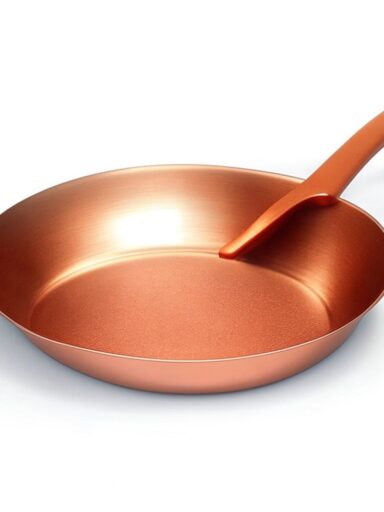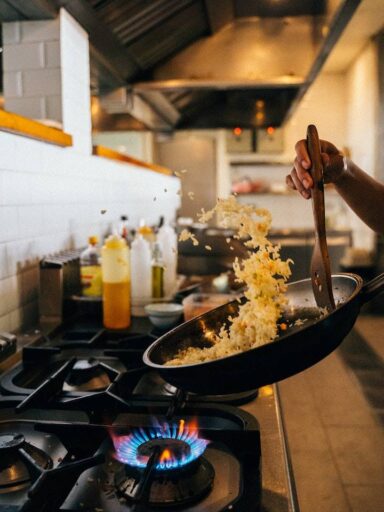Cooking steak is an art, and it requires the right tools to achieve perfection. One of those essential tools is pans for cooking steak.
The right pan can make all the difference in how your steak turns out, from the sear on the outside to how juicy and tender it is on the inside. Whether you prefer a cast iron skillet or a stainless steel pan, choosing one that is high quality and designed for cooking steak is crucial.
Pans for Cooking Steak
The importance of choosing the right pan for cooking steak
Choosing the right pan for cooking your steak can impact every aspect of your cooking process, from controlling heat distribution to achieving even browning and searing. When using a poorly suited pan, you’ll often find that your steaks don’t cook evenly or come out with burned spots and patches that leave them dry and unappetizing.
The wrong type of material in your pan could even change the flavor profile of your final dish. The importance lies not only in ensuring that you are using an appropriate-sized skillet but also one crafted from materials known for their high heat conductibility and ability to hold heat well.
The benefits of using a good quality pan for cooking steak
Investing in a good quality pan will undoubtedly bring multiple benefits when it comes to cooking steaks. Firstly, they are built with thicker walls allowing better distribution of heat throughout while retaining temperature which ensures that both sides are cooked evenly without burning or drying.
Additionally, high-quality pans will last longer so long as they are appropriately maintained over time by regular seasoning practices than cheaper options available in markets which tend to warp more easily over time when exposed to temperature fluctuations; leading you to replace them more frequently.
Using a high-quality skillet designed specifically for cooking steaks gives chefs greater control over their cooking experience as they tend to have longer handles which reduce chances of burns and are made with materials that have higher heat tolerance levels, making them more durable. Overall, choosing a high-quality pan is a wise investment for any steak lover serious about preparing delicious meals consistently.
Types of Pans for Cooking Steak
Cast Iron Skillet: The Best Choice for Cooking Steak
A cast iron skillet is the best choice of pan for cooking steak, and there are a few reasons why cast iron skillets are so popular. First and foremost, they retain heat exceptionally well. This means that when you place your steak in a preheated cast iron skillet, it will sear beautifully and develop a flavorful crust on the outside while remaining juicy and tender on the inside.
Additionally, cast iron skillets are incredibly versatile and can go from stovetop to oven with ease. They are durable and long-lasting if properly cared for.
When using a cast iron skillet to cook steak, it is important to season the pan properly before use. This process involves coating the pan with oil or fat and heating it until it begins to smoke.
Then let it cool before wiping away any excess oil or fat. This creates a non-stick surface that will prevent your steak from sticking to the pan during cooking.
Caring for your cast iron skillet is also crucial in order to keep it in good condition over time. After use, avoid using soap when cleaning as this can strip away the seasoning on the pan.
Instead, rinse with hot water and scrub any debris away with a stiff brush or sponge. Then coat lightly with oil before storing in a dry place.
Stainless Steel Pan: A Practical Alternative
While many people swear by their trusty cast iron skillets for cooking steak, stainless steel pans also have their advantages when it comes to preparing this classic dish. Stainless steel pans heat up quickly and evenly which makes them ideal when you want to sear your steak quickly without having to wait too long. One benefit of using stainless steel pans is that they don’t require seasoning like cast iron pans do.
You can simply preheat the pan with a little bit of oil or butter before adding your steak. Another advantage is that stainless steel pans are easy to clean and maintain.
They can be washed with soap and water without worrying about damaging the surface. However, there are a few things to keep in mind when using stainless steel pans for cooking steak.
First, make sure the pan is preheated thoroughly before adding your steak, as this will ensure a good sear on the outside while keeping it juicy on the inside. Additionally, avoid overcrowding the pan as this will lead to uneven cooking.
The Verdict: Cast Iron Skillet vs Stainless Steel Pan
While both cast iron skillets and stainless steel pans have their advantages when it comes to cooking steak, ultimately it comes down to personal preference and what you have available in your kitchen. Cast iron skillets are ideal for those who prioritize flavor and don’t mind taking extra care when seasoning and cleaning their cookware.
Stainless steel pans are great for those who want a practical option that is easy to clean and use straight out of the box. Whatever you choose, just remember that a well-prepared steak should always take center stage!
Factors to Consider When Choosing a Pan
Choosing the right pan for cooking steak can often be overwhelming, as it requires consideration of several factors. The size and shape of the pan, its thickness, and the handle are three vital factors that impact the outcome of your steak. If you do not consider these factors when choosing a pan, then you might end up with an overcooked or undercooked steak.
Size and Shape: How They Affect Cooking Process and Outcome
The size and shape of your pan play a crucial role in how evenly your steak will cook. When selecting a pan for cooking steak, ensure that it is large enough to accommodate your cut of meat comfortably without crowding.
Crowding may lead to uneven cooking since the meat at the bottom will cook faster than those on top. Additionally, consider the shape of your chosen pan since it can also affect how your meat cooks.
For instance, if you are cooking a thicker piece of steak like filet mignon or ribeye, use a deep-sided sauté pan with a flat bottom. This type of pan helps distribute heat evenly across the surface and prevents any flare-ups that may occur during the cooking process.
Thickness: Why It Matters When Choosing a Steak Pan
The thickness of your chosen pan determines how quickly it heats up and its capacity to retain heat. A thick-bottomed cast-iron skillet or stainless steel pan has better heat distribution compared to thin pans since they retain heat much longer. Since steaks require high temperatures for proper searing and browning, thicker pans offer better results.
Moreover, thick pans have fewer hot spots compared to thinner ones, thus reducing the chances of overcooking parts while undercooking others. However, keep in mind that such pans take longer to preheat than their thinner counterparts.
The Importance Of Having A Comfortable Handle When Working With Hot Pans
When cooking steak in a pan, the handle of the pan is an often-overlooked factor. A comfortable handle will make it easier to move the pan around stovetops, especially when flipping and moving the steak.
Moreover, a handle that stays cool during cooking is vital since you do not want to end up with burns or blisters when handling hot pans. Silicone handles are an excellent option since they offer a firm grip and stay cool throughout the cooking process.
If your chosen pan does not have a silicone handle, ensure that they have a heat-resistant coating. Additionally, choose pans with handles that can be fastened securely to avoid any wobbling when carrying your steak from one place to another.
Tips on Cooking Steak in a Pan
Preheating the Pan: The Secret to Perfectly Cooked Steak
Preheating the pan is a crucial step in cooking steak. It ensures that the meat cooks evenly and produces an appetizing sear on the outside while leaving it juicy on the inside. To properly preheat your pan, heat it over medium-high heat for at least five minutes before adding any oil or steak.
You can test if the pan is hot enough by sprinkling some water droplets on it; if they sizzle and evaporate immediately, then your pan is ready. If you are using a cast iron skillet, it may take longer to preheat than other pans due to its thick material.
You may need to heat it up for 10-15 minutes before adding oil or steak. For stainless steel pans, preheating takes less time since they have thinner walls.
Seasoning and Preparing Steak: Maximizing Flavor and Texture
Before cooking your steak in a pan, seasoning it properly can make all the difference in flavor and texture. First, make sure your steak is at room temperature before seasoning. Sprinkle salt and pepper generously on both sides of the meat or use any other seasonings of your choice.
Next, drizzle some oil onto your preheated pan and swirl it around to coat evenly. Lay your seasoned steak onto the hot surface away from you with tongs carefully – not using a fork!
Avoid overcrowding the pan as this will cause uneven cooking. When searing one side of your steak, resist moving it around until you’re ready to flip over about 4-5 minutes for medium-rare depending on thickness, so that a nice crust forms before flipping.
Conclusion
Cooking steak in a pan can be intimidating initially but with the right pan and following these tips, it can be both easy and rewarding. Preheating your pan is essential to ensure that the steak cooks evenly and develops a beautiful crust while keeping the inside tender and juicy.
Seasoning the steak properly maximizes flavor, texture, and adds vibrance to your meal. With these tips in hand, you are now equipped to prepare a delicious steak at home anytime you want.
Don’t hesitate to experiment with different types of pans and seasonings until you find what works best for your preferred taste. Happy cooking!




